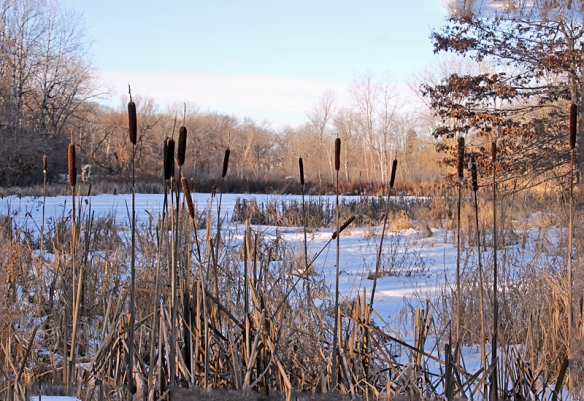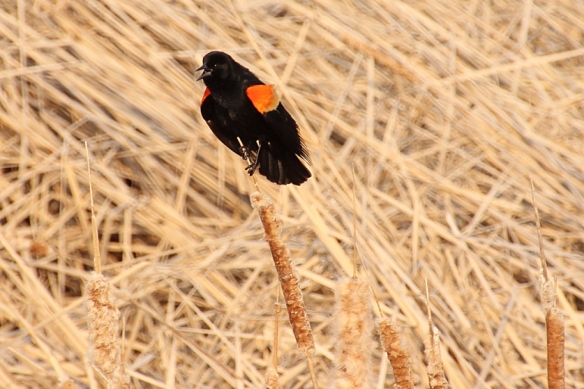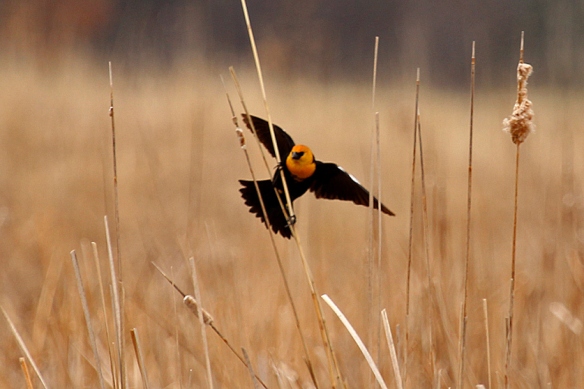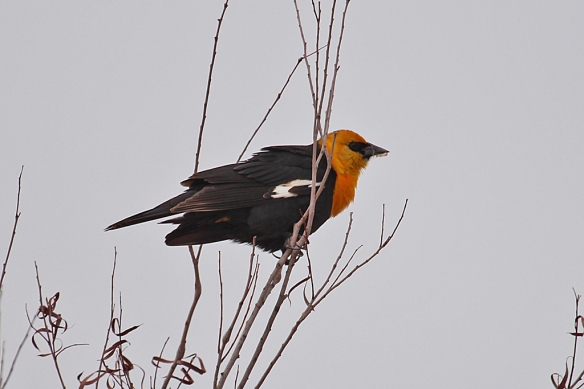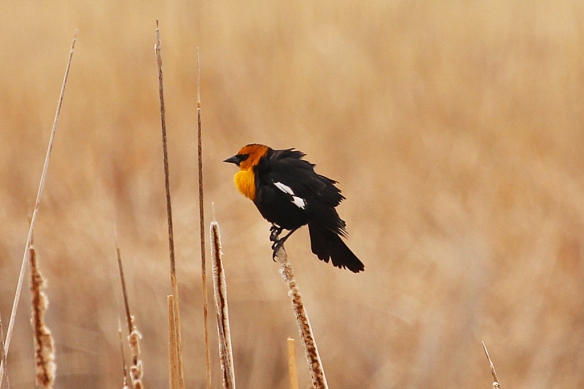Winter is the perfect time to explore Minnesota swamps — no bugs, firm footing, lots of nooks and crannies to explore. In fact, it’s the perfect time to get close to what one can only see with binoculars the rest of the year, and did I mention freedom from annoying mosquitoes? Muskrat houses, beaver lodges, footprints of unknown animals crossing the snow and ice, all signs of life going on as usual in the frozen swampland.

And if you’re lucky, you find eagle and osprey nests that you would like to come back and revisit when the birds have returned to breed near the swamp.
But today, there weren’t any critters around, so I took time to examine the omnipresent cattails and marvel at the construction of that enormous seedhead.
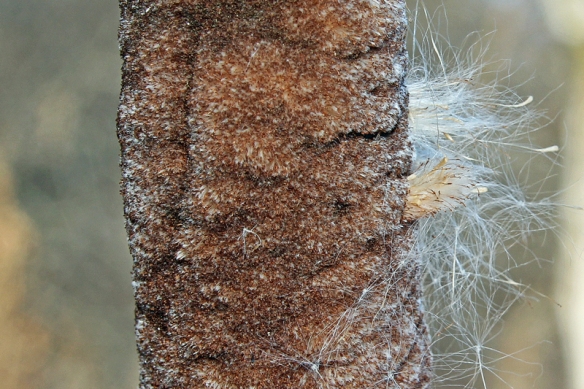
The compact sausage-shaped seedhead develops from fertilized female flowers. Male flowers are present only in the early spring and sit above the female flowers on the spike, but fall off after they have released their pollen. That’s why the top of the cattail always looks bare in the winter.
There must be billions of those tiny seeds in one cattail head. Is it any wonder this plant spreads so quickly at the margin of shallow lakes and slow-moving streams? It doesn’t depend just on establishment by seed either; cattails propagate quite nicely from their underground root stalk (rhizome) and can spread where ever the water, light, and temperatures are conducive to their growth, unfortunately choking out many of our native wetland species.
Because they are so successful, we tend to think of them as nuisance plants (the common Narrowleaf Cattail is introduced from Europe actually). But they are one of the most versatile of the wild, edible plants, if harvested at the appropriate times. For example: (information from Voyaguer Country)
- In late spring the young shoots can be eaten raw or cooked as we would asparagus,
- later the green immature spikes can be cooked and eaten like corn on the cob.
- In early summer the yellow pollen produced by the yellow male spike, can be collected, sifted and mixed with other flours creating a protein rich flour. (Apparently the pollen is also flammable and makes a nice explosive combustion for fireworks.)
- Late summer the horn shaped sprouts at the top of the root stalks can be eaten raw or cooked. These sprouts may contain up to 30% starch and sugars.
- The starchy core at the base of the sprouts can be prepared like a potato. In the winter the root stocks fill with starch which can be retrieved and dried into a good quality white flour, or cooked like a potato.
- Once the flower spikes have gone to seed they have been used as insulation, padding, and wound dressing, and the leaves can be used to weave together for a mat.
And of course, numerous avian species seek out the protection that cattail vegetation provides for nesting habitat.

